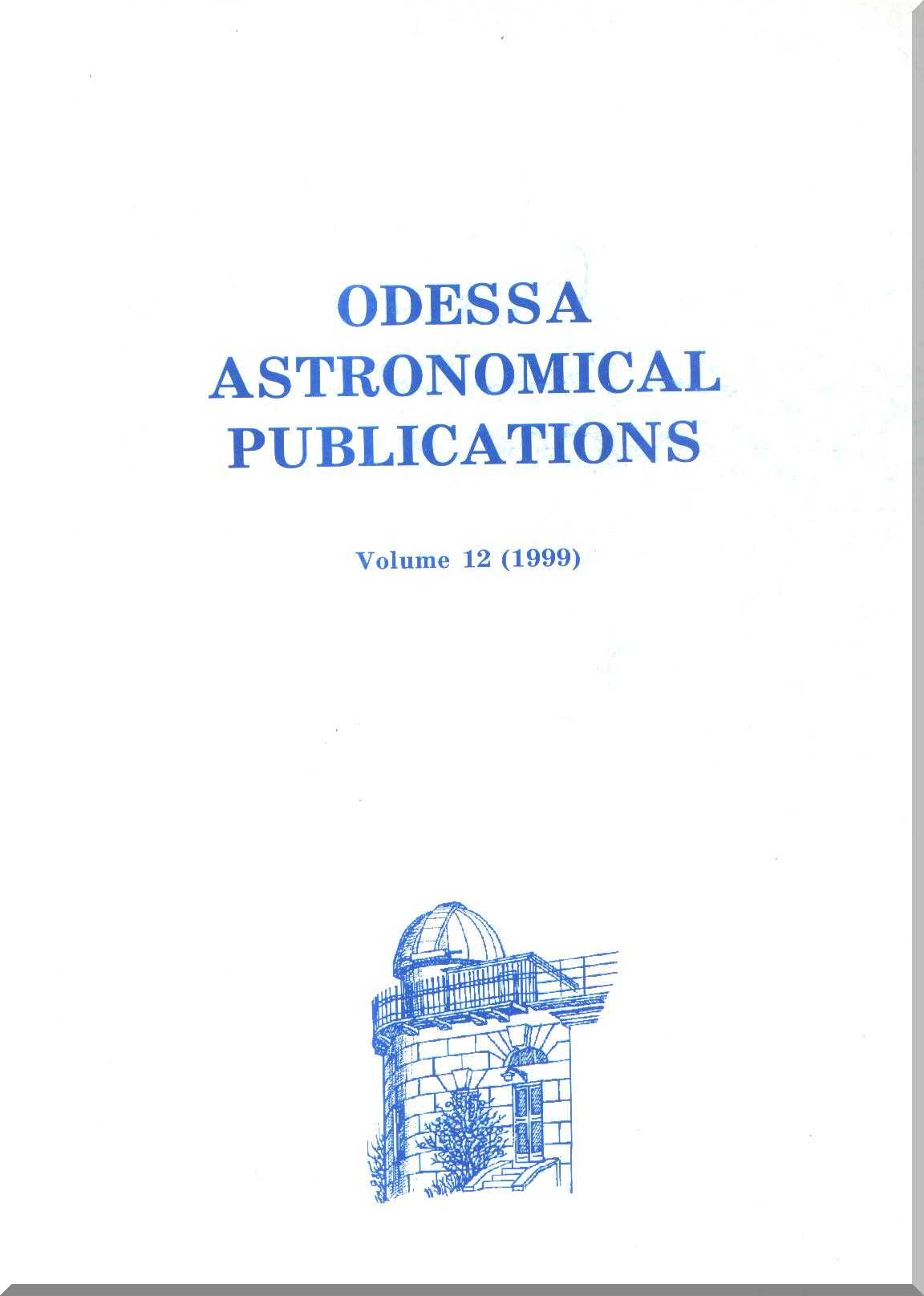IMF AND EVOLUTION OF CLOSE BINARIES AFTER STARFORMATION BURSTS
DOI:
https://doi.org/10.18524/1810-4215.1999.12.93119Ключові слова:
Stars, binary, evolutionАнотація
This paper is a continuation and development of our previous articles (Popov et al., 1997, 1998). We use Scenario "Machine" (Lipunov et al., 1996b) - the population synthesis simulator (for single binary systems calculations the program is available in WWW: http://xray.sai.msu.ru/ (Nazin et al., 1998)) - to calculate evolution of populations of several types of X-ray sources during the first 20 Myrs after a starformation burst. We examined the evolution of 12 types of X-ray sources in close binary systems (both with neutron stars and with black holes) for different parameters of the IMF - slopes: α = 1, α = 1.35 and α= 2.35 and upper mass limits, Mup: 120 M☉ , 60 M☉ and 40 M☉ . Results, especially for sources with black holes, are very sensitive to variations of the IMF, and it should be taken into account when fitting parameters of starformation bursts. Results are applied to several regions of recent starformation in different galaxies: Tol 89, NGC 5253, NGC 3125, He 2-10, NGC 3049. Using known ages and total masses of starformation bursts (Shaerer at al., 1998) we calculate expected numbers of X-ray sources in close binaries for different parameters of the IMF. Usually, X-ray transient sources consisting of a neutron star and a main sequence star are most abundant, but for very small ages of bursts (less than ≈ 4 Myrs) sources with black holes can become more abundant.Посилання
Contini T., Davoust E., Considere S.: 1995, As. Ap., 303, 440
Lipunov V.M., Ozernoy L.M., Popov S.B., Postnov K.A. Prokhorov M.E.: 1996a, Ap.J. 466, 234
Lipunov V.M., Postnov K.A., Prokhorov M.E.: 1996b, Ap. Space Phys. Rev. 9, part 4.
Nazin S.N., Lipunov V.M., Panchenko I.E., Postnov K.A., Prokhorov M.E., Popov S.B.: 1998, Grav. Cosmology, 4, suppl. "Cosmoparticle Physics", pt. 1, 150 (astro-ph 9605184).
Popov S.B., Lipunov V.M., Prokhorov M.E., Postnov K.A.: 1997, astro-ph/9711352.
Popov S.B., Lipunov V.M., Prokhorov M.E., Postnov K.A.: 1998, AZh, 75, 35 (astro-ph/9812416).
Popov S.B., Prokhorov M.E., Lipunov V.M.: 1999, astro-ph/9905070.
Schaerer D.: 1996, Ap.J., 467, L17
Schaerer D., Contini T., Kunth D.: 1998, As. Ap. 341, 399 (astro-ph/9809015) (SCK98).
van den Heuvel, E.P.J.: 1994, in: "Interacting Binaries", Eds. Shore, S.N., Livio, M., van den Heuvel, E.P.J., Berlin, Springer, 442.
##submission.downloads##
Опубліковано
Як цитувати
Номер
Розділ
Ліцензія
Авторське право (c) 2017 Odessa Astronomical Publications

Ця робота ліцензується відповідно до Creative Commons Attribution-NonCommercial 4.0 International License.
Відповідно Закону України про авторське право і суміжні права N 3792-XII від 23 грудня 1993 року
